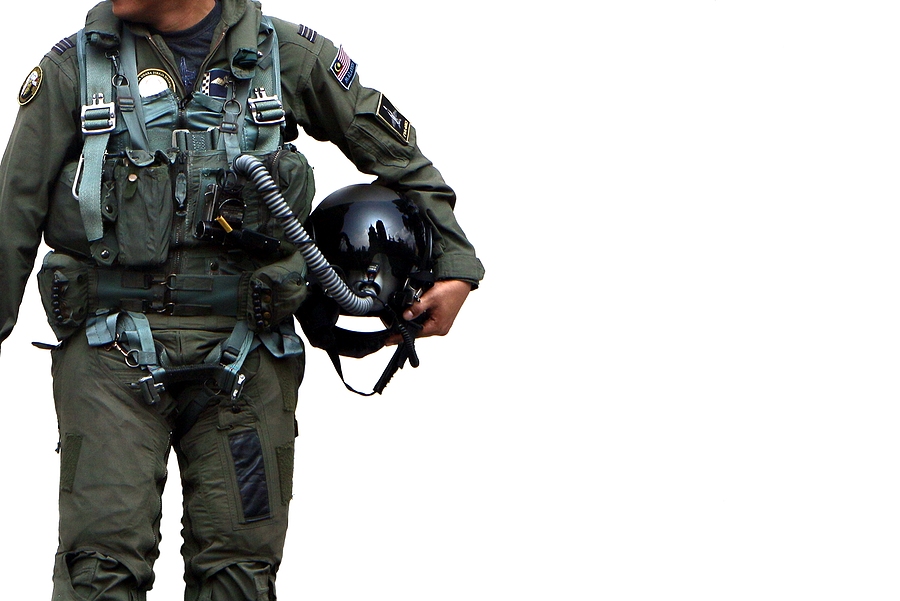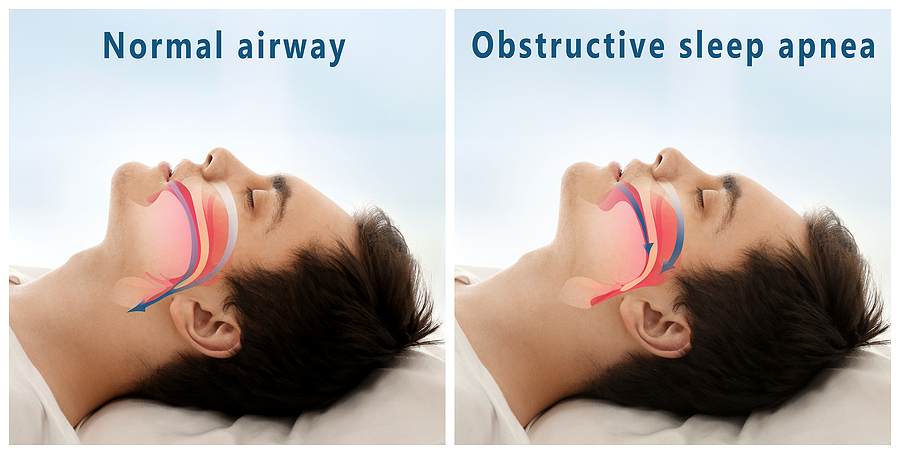CACI for Asthma – Asthma affects about 13% of the population and ranks the most common lung disease in the United States [1,2]. While many children diagnosed with the condition experience full or partial remission during adolescence or early adulthood, others experience persistent exacerbations or progression to severe disease later in life [3].
Even though neurological and cardiac conditions are most likely to cause sudden or complete incapacitation, respiratory conditions – including asthma – are particularly interesting when it comes to aviation physiology. As the partial pressure of oxygen drops with increasing altitude, optimal lung function becomes more and more important.
Common Solutions for Common Problems
Many severe asthma sufferers consider flying even as a passenger very carefully [4]. That should come as no surprise. For those who have required emergency room treatment or hospitalization to control a severe exacerbation, the prospect of boarding an aircraft full of potential triggers without access to advanced medical care can represent a significant risk proposition.
On the other end of the spectrum, pilots who outgrew their asthma symptoms long ago or who experience easily controllable, infrequent exacerbations pose little threat to aviation safety. Moreover, because it is so common, asthma can be overdiagnosed. Some doctors will prescribe medication labeled to treat asthma for transient respiratory conditions like those that accompany the common cold.
That can muddy the waters when it comes to FAA medical certification. When an AME sees “asthma” listed as a medical condition, how can they tell whether you’ve been to the emergency room repeatedly or haven’t experienced symptoms in many years? If they see an asthma inhaler on your list of current medication, who is to say if you use it once a day or once a year?
Thankfully, the FAA has provided AMEs with some authority to differentiate between those extremes.
Asthma that Should Not Affect your FAA Medical
The FAA’s Aerospace Medical Certification Division (AMCD) has designated asthma as one of 24 Conditions AMEs Can Issue (CACI). As with other CACI conditions, AMCD recognizes that simply having a diagnosis does not necessarily have any aviation safety implications. They are more interested in whether or not you are receiving proper medical care and have your symptoms adequately under control.
In order to make that determination, you will need to provide your AME with a current detailed clinical progress note from your treating physician. You AME can issue your medical certificate on the day of your certification exam as long as your medical documentation demonstrates the following criteria:
- Your treating physician finds your condition is stable and they are satisfied with your current treatment plan
- You experience asthma symptoms two days per week or less
- You use your rescue inhaler no more than two days per week.
- You use oral steroids for exacerbations no more than two times per year
- You have not been hospitalized for asthma within the last year
- You have not had more than two emergency room or urgent care visits for asthma within the past year
Assuming you meet those basic criteria regarding your symptoms, there are other criteria regarding the medications you can use. In addition to your an albuterol rescue inhaler, you can use any combination of the following medications:
- Long-acting beta-agonists such as formoterol or salmeterol
- Inhaled steroids such as fluticasone or budesonide
- Montelukast (Singulair)
- Non-sedating antihistamines to control triggers are permissible as well
There is one other caveat for those taking medications other than albuterol. You will need to show your AME the results of pulmonary function testing conducted within 90-days of your certification exam that demonstrates your FEV1, FVC, and FEV1/FVC are all greater than 80% of predicted values.
Provided the note from your treating doctor certifies that your asthma is controlled to these standards, your AME can issue your certificate without waiting for further review or permission from the FAA.
Asthma that will Pique the FAA’s Interest
For pilots that do not qualify for a medical certificate under the FAA’s CACI program, it does not mean that you will never be able to fly. It does mean that your medical certificate application will require more scrutiny.
The FAA has not published the criteria they use when considering medical certification for pilots who do not satisfy CACI criteria. However, some general rules apply. Most importantly, your symptoms need to be well controlled and your doctor needs to be done making medication adjustments. Pilots who do not meet the CACI symptom severity and frequency criteria probably cannot qualify for a FAA medical certificate.
However, those who have well controlled symptoms, but require newer medications like omalizumab or dupilumab may be able to qualify for a special issuance. It will generally take the FAA several months or longer to consider such an application, but with the right preparation, those who have not experienced significant or frequent exacerbation should at least consider the possibility of applying for a medical certificate.
Getting Ready for Your AME Exam
The FAA’s policies concerning asthma illustrate several important points about how they consider medical certification in general. Most importantly, it does not expect pilots to be free from any medical diagnosis and physical defect. If you can demonstrate that you are safe to fly, that’s good enough. That holds true for pilots with resolved mental health diagnoses and well treated coronary artery disease, just as it does for asthma.
As long as you have been appropriately treated and remain under supervision of a competent physician, your chances of qualifying for a medical certificate are very good. Too many pilots shy away from seeking medical care because they think it might risk their medical certification.
A better strategy is to find a good doctor, keep your medical conditions under control, and make sure you have the right record to show it. FAA medical policies are more permissive than many pilots assume, but they don’t get to evaluate you in person. They only see what you look like on paper. Knowing the standards and preparing for your AME before you arrive can eliminate months of waiting for your certificate.
References
[1] “2021 National Health Interview Survey (NHIS) Data | CDC.” Accessed: Apr. 20, 2024. [Online]. Available: https://www.cdc.gov/asthma/nhis/2021/table2-1.htm
[2] I. D. Penman, S. Ralston, M. W. J. Strachan, and R. P. Hobson, Eds., Davidson’s principles and practice of medicine, 24th edition. Edinburgh: Elsevier, 2023.
[3] S. Bronnimann and B. Burrows, “A prospective study of the natural history of asthma. Remission and relapse rates,” Chest, vol. 90, no. 4, pp. 480–484, Oct. 1986, doi: 10.1378/chest.90.4.480.
[4] D. Kastrati, “Flying With Asthma: What Patients Need to Know,” Pulmonology Advisor. Accessed: Apr. 20, 2024. [Online]. Available: https://www.pulmonologyadvisor.com/home/topics/asthma/flying-with-asthma/





